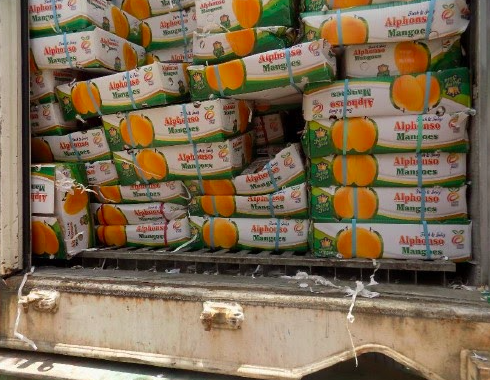Cargo Claims – who is responsible for what?

Top 5 small business freight claims mistakes!
June 6, 2021
Cargo claims – what evidence is needed?
June 25, 2021If you fail to plan, you’re planning to fail. In cargo claims, if exporters and importers are not making the effort to learn how to do things the right way, you’ll be making mistakes that will cost you tons of time and money.
Now, before we get into who is responsible for what, our team at Recoupex wanna make a point about this industry: cargo claims are NOT easy. You’re playing a competitive game with other people who are all trying to make money too by putting the blame on someone else.
In the supply chain there are usually 3 areas of responsibility:
Pre-Shipment
Transit between port of load and port of destination
Post-Shipment
Let’s get to know who is responsible for cargo and container during each step of the journey and how shippers and receivers can work together in the case of a potential cargo claim!
Pre-Shipment
- The shipper collects the empty container
- The shipper stuffs cargo into the container
- The shipper returns the full container to port.
Until the full container is delivered to the loading port, the container and cargo is the responsibility of the shipper. Thus, it is prudent to understand what that responsibility entails and, in the case of a cargo claim at destination, how, what the shipper does or does not do at origin can affect the claim. Here are some tips for shippers to make the cargo claim process easier for a consignee:
Document the condition of the cargo before and during the stuffing process by taking photos of the condition of the cargo and packaging. If, for example, the cargo arrives in rotten condition, the shipper will need to prove that the cargo was not rotten at time of stuffing the container; or, if the cartons or packaging arrives wet or damaged, the shipper needs to prove that packaging was in tact and in good condition at time of stuffing.
If the cargo is fresh produce and a reefer container is being used, it is important to evidence the fact that the cargo was not loaded above the red/load line, allowing the air to flow freely around the cargo in order to keep it cool. Once again, this can be done by taking photos before finally closing the doors of the container.
In the case of reefer container usage, it would be prudent for the shipper to plug the unit in and switch it on in order to check that the reefer equipment is in proper working order. It is worth documenting the temperature of the reefer unit at the time of closing the container doors for the last time.
It is highly recommended, in the case of using a reefer container, that the shipper supplies a mobile temperature recording device. This will assist to prove temperature deviation or long periods of power off, which would lead to temperature increase within the unit.
If cargo is being loaded in a dry container, it is important to photograph the cargo within the container before finally closing the container doors in order to prove that the cargo was not blocking the air vents, allowing air to flow freely in the container.
In the case of stuffing hygroscopic commodities, such as coffee or cocoa, it is recommended that the shipper takes the additional initiative by putting desiccant bags into the container as well as the usual lining of kraft paper.
Transit
Once the container has been stuffed, sealed and enters the port of load, the shipper is no longer responsible for the cargo or container. The responsibility now shifts to the shipping line/carrier.
If you have had a claim against a shipping line, you will have noticed Article 3 (2) of the Hague Visby Rules: ”… the carrier shall properly and carefully load, handle, stow, carry, keep, care for and discharge the goods.” In layman’s terms, this means that from the time that the container is handed over at POL, until the time that the container is collected at POD, the cargo and container is the responsibility of the carrier.
Post-Shipment
Once the container is gated out of the port of destination, the cargo and container become the responsibility of the consignee. Here are some tips for consignees to make the cargo claim process more successful:
It is very important for the consignee to send a notification, WITHIN 3 DAYS of taking delivery of the container, to the carrier of damage to the cargo, whether damage is suspected or not. If notification is not sent within 3 days, the burden of proving that the damage or loss occurred while in the custody of the carrier becomes the consignee’s. Whereas, if the notification is sent within 3 days, the burden of proof to prove that damage or loss did NOT occur while in their custody shifts to the carrier.
It would be prudent for the consignee to request that the trucker or transporter check the container for any damage and to look for signs of suspected tampering. The trucker should also check the number of the bolt seal on the container door against the seal number on the shipping documents at the time of collecting the container from POD.
Upon receipt of the container at final destination, the consignee should also check for signs of damage or tampering of the container and also check the bolt seal number against the seal number on the shipping documents. This will rule out the possibility that loss of cargo occurred while in the custody of the trucker.
Upon opening the container doors, immediately take photographs of the cargo within the container. These photos can be used as comparison against photos taken by the shipper at the time of finally closing the doors at origin. These comparative photos will be very useful in the case of a cargo claim for pilferage or water damage to cargo or packaging.
If the cargo is sensitive or high value, it may be worth employing the services of a third party surveyor. Survey reports hold a lot of weight in a cargo claim if the damage or loss is well documented and clearly written.
Loss mitigation is a must for all cargo claims. For example, if part of the cargo is wet, damaged or rotten, the cargo should be segregated from cargo which is salvageable; or if, for example, cargo is not fit for human consumption, it would be worthwhile to try and sell the cargo as animal fodder. Any cargo which cannot be salvaged should be destroyed and documented as such with a destruction certificate.
Conclusion
This article outlines the importance of shippers and consignees working together from start to finish, not just in the sale process, but throughout the entire shipping process. When each party carries out their responsibilities thoroughly and communicates promptly, the claim process will be far easier and have the potential for a more successful outcome.
Need help with you cargo claim? We are here to help info@recoupex.com



